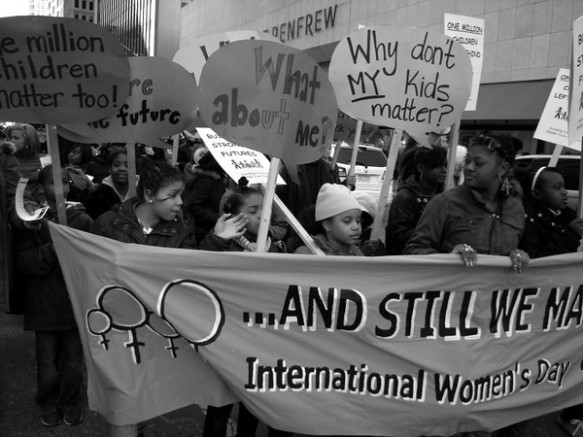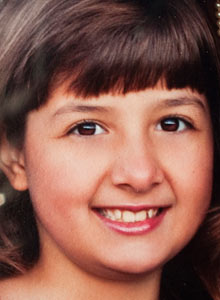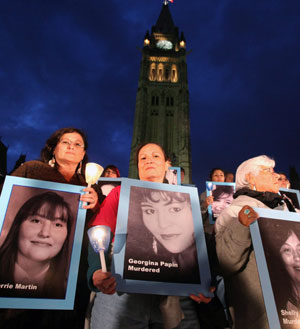… like John Baglow.
I think it’s fair comment to point out that the photo chosen by blogger John Baglow to accompany his piece on prostitution posted at rabble is from a campaign organized and funded by the brutal Irish pimp Peter McCormick. I’m sure it was accidental so I will go no farther with that line of inquiry. There are too many other accidents in Mr. Baglow’s piece that require response.
I have no problem when a blogger or any writer of an opinion piece declares their bias – “opinion” – I get it. But Mr. Baglow also points out that he “is a former VP of PSAC, currently a writer and researcher, public policy consultant, occasional academic and poet”. In that case I expect a cogent presentation of the issues involved in debating the merits or lack thereof of proposed legislation to protect communities and exploited persons put forward recently by the federal government. But all I got was a sermon and some insults. Given the ongoing crumbling of mediated public and political debate that we see nowadays with resulting rampant disaffection, cynicism and ignorance, this is disappointing. To see such a blog posted in alternative media is also disappointing. An attempt should be made, at the very least, to take a stab at contributing to the enlightenment of readers rather than making repetitive attempts to mischaracterize important issues involving women, race and class.
It is not only unfair of Baglow to characterize abolitionist feminists as “priggish moralizers” – it’s blatantly inaccurate and manipulative. The abolitionist position is a good deal more nuanced than that and either Baglow knows it and chooses to ignore it in his attempt to polarize the debate, or he is intolerably ignorant.
The abolitionist position is based on an understanding of prostitution as the exploitation of women and particularly of poor women, racialised women and Indigneous women. Note that the coalition of women from the independent women’s movement that participated in the Bedford case was comprised of Asian women, overrepresented and hidden in indoor work which apparently they do not find “safe”; women’s shelter workers; advocates from Canada’s sexual assault care centres; the Elizabeth Fry Society – working with imprisoned women; the Aboriginal Women’s Action Network; and the Native Women’s Association of Canada. Surely all these women and their hard work and careful argument cannot be characterized, should not be characterized anywhere, as mere priggish moralism. In my view that conclusion is both sexist and racist on its face. The differences among feminists with respect to issues such as pornography and prostitution are long-standing; arguments are fairly well-developed on both sides. None of us deserves to be dismissed as an “angry radical” and surely not Meghan Murphy who writes for rabble and is a respected voice in the Canadian feminist community. The link to her work strikes me as purely gratuitous and downright mean. Though I must admit I’m happy to be an angry radical if my argument is actually being accurately described. What the hell is wrong with angry radicals?
Now to Baglow’s argument. He lectures us that we mustn’t see prostituted women as victims and tells us that they have agency and that we must accept that proposition at the outset. He doesn’t define or describe agency or tell us in what circumstances we are allowed to see agency as being so circumscribed as to be almost non-existent. Of course we all have agency. Of course women struggle in resistance to their circumstances. That is both the genius and strength of oppressed people. That agency doesn’t erase exploitation and certainly doesn’t erase our social and political responsibility for it. That’s just a non-starter but it does play nicely into libertarian notions so popular today that exhort us to believe that individual freedom is best achieved when society leaves people alone to negotiate their own way through the difficulties foisted upon them by their sex, race and class. It implies that it is those of us who fight for recognition that people in certain circumstances are victimized who are somehow responsible for that victimization and stigmatization. Nice work lefty guy – let prostituted women choose their work and blame women if it’s stigmatized according to some crazy old Madonna/Whore dichotomy. Many of the advocates amongst abolitionists are survivors of prostitution. What they did to escape stigma, in part, was to join themselves in solidarity with feminist analyses and principles. Because those are the analyses and principles that they believe will lead to the liberation of their sisters. That is, ALL their sisters and not just those who claim to choose and be happy in the sex trade.
Those who are oppressed are not often in a position to end their exploitation without advocacy on the part those of us who are not quite so oppressed. Yes, they can fight for themselves. But Baglow fails to recognize that the women of the coalition are doing just that: fighting for themselves. He says we should not see prostituted women as “hapless victims upon whom unspeakable violence and degradation are perpetrated.” Well, certainly not hapless but yes, often victims upon whom unspeakable violence and degradation are perpetrated. Is that really even arguable?
For instance, let’s take Terri-Jean Bedford, one of the litigants in the now famous Bedford case. Some aspects of Bedford’s life are now a matter of public record. Here’s a description from the judgment of the Supreme Court of Canada:
“Terri Jean Bedford was born in Collingwood, Ontario, in 1959, and as of 2010 had 14 years of experience working as a prostitute in various Canadian cities. She worked as a street prostitute, a massage parlour attendant, an escort, an owner and manager of an escort agency, and a dominatrix. Ms. Bedford had a difficult childhood and adolescence during which she was subjected to various types of abuse. She also encountered brutal violence throughout her career … ” see R v. Bedford
There is no doubt in my mind that Bedford has agency. There is also no doubt that she was victimized throughout her life, from childhood on into adulthood, and that her exploitation had a good deal to do with the fact that she was a girl and a woman with limited opportunities and vulnerable to male exploitation. This is not a description of a woman about whom we should be unconcerned. The social harms inflicted upon her are not harms that we should ignore as a matter of law and policy. In some sense she represents what is often referred to as a stereotype of a prostituted woman, abused in childhood, the victim of “brutal violence” and no doubt the victim of the trauma attendant upon such experiences. To say so is not to stigmatize her; the stigma experienced by a prostituted woman doesn’t come because other women care about her experiences or from our advocating for a set of social policies and laws that might reduce the possibility that any woman must suffer what she has suffered.
Mr. Baglow then exhorts his readers to see prostitution as mere labour, lest “bare principle” blind us to the “complex issues of everyday life”. I think Mr. Baglow means we must put aside ethical and normative considerations in order to deal with the ugly reality of prostitution, that age-old and unshakeable institution. But many things are laborious, many things are work, that we choose to put outside the law and outside social approval. In arguing that men ought not to be able to purchase women’s sexual services and remain within the law and social norms, abolitionists are not arguing that women in the sex trade do not do work. We are arguing that men ought not to be allowed allowed to exploit women’s bodies without penalty. We must think about what particular kinds of work exploit human beings, i.e. women, to such a high degree that we cannot condone it. There are many examples of different kinds of work that we find beyond the pale. In citing examples I do not mean to compare them to prostitution but merely to note that human labour is not always legal work: for instance, overtime work that is not compensated appropriately; slavery; wage slavery; child labour. The illegality does not pertain to the worker but to the capitalist and the consumer. As it should with respect to prostitution.
Baglow’s “Mrs. Grundy” comment is, frankly, diminishing and dismissive of women and thus sexist and beneath contempt. I am in solidarity with women who work in the sex trade. I seek a form of solidarity that envisions a society in which women, racialised women, poor women and Indigenous women do not have to sell sexual services to men in order to survive, either psychically or physically or whatever other way. When we take steps toward that vision, we enable and support women in making real choices – still circumscribed by the human necessity to work, but not forced or coerced into a form of work which only very few would truly and freely choose. Mr. Baglow is free to disagree with respect to how we achieve that end. In my view he ought not to be free to misrepresent and insult the efforts of those women with whom he claims to be in solidarity.
As Andrea Dworkin said, “The Left cannot have its whores and its politics too.” Amen sister. Amen.







